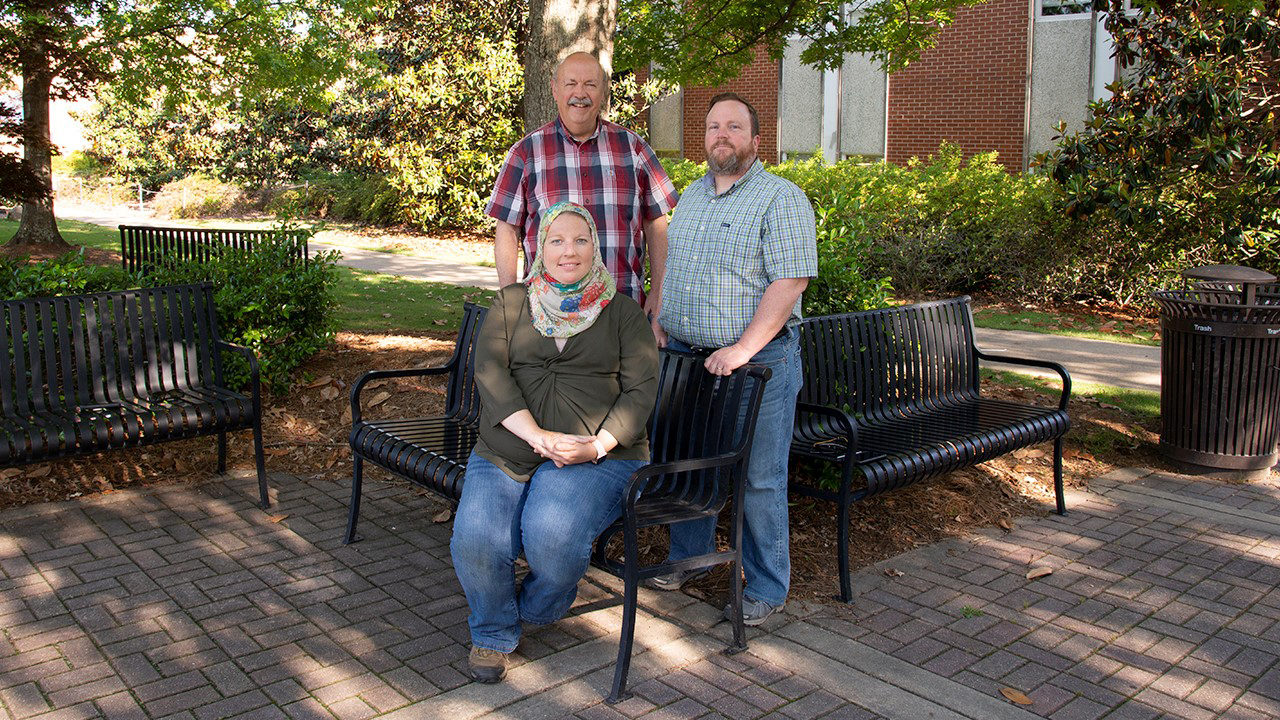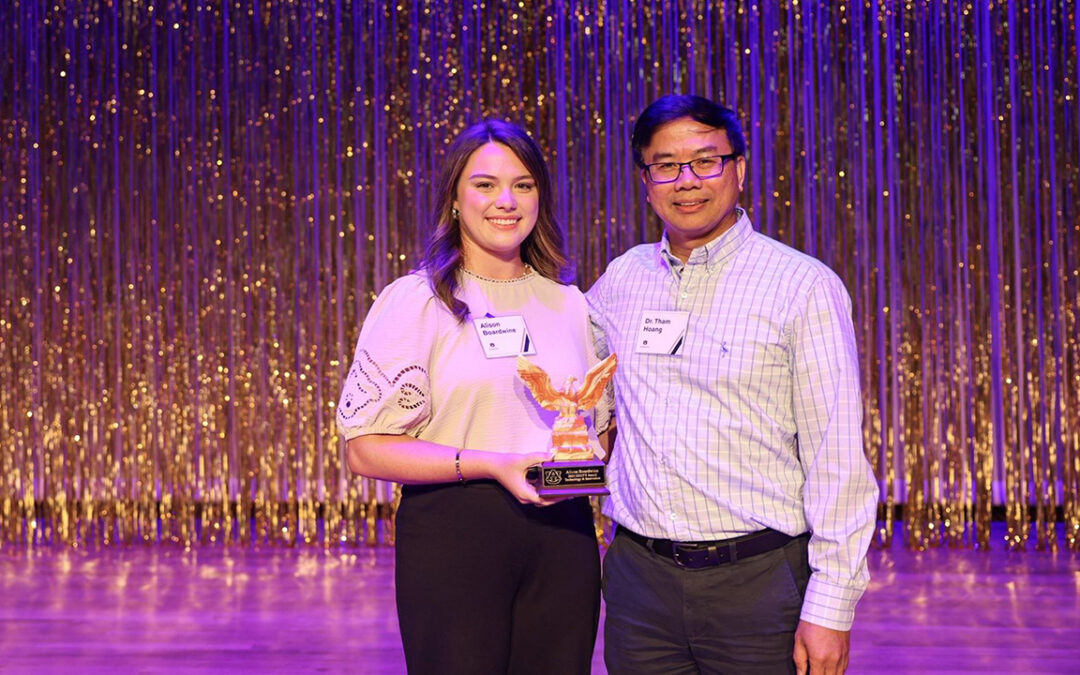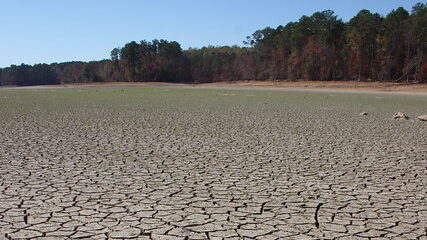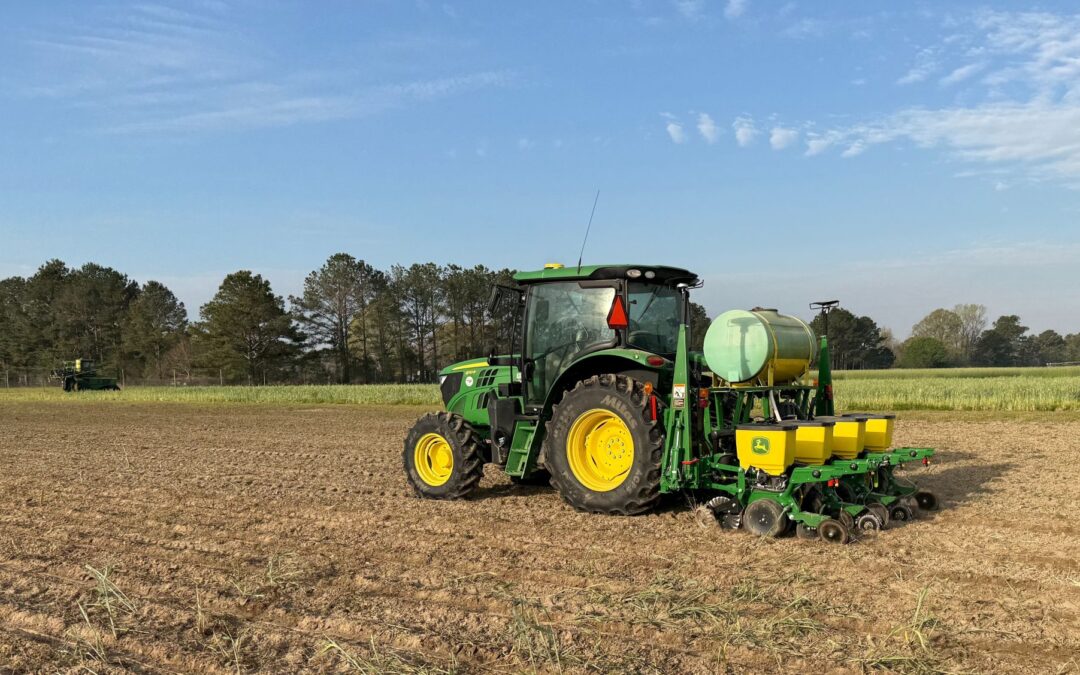By Paul Hollis / Jul 1, 2019 4:40:55 PM
Feature
Researchers and extension specialists in Auburn’s College of Agriculture are joining forces on a project that could provide a fertilizer alternative to Alabama livestock producers currently using synthetic nitrogen on bermudgrass.
Auburn has historically been at the forefront in conducting research on beneficial bacteria to promote plant growth and provide biological disease control of crop plants. Specifically, the work of Joseph Kloepper, Alumni Professor in the Department of Entomology and Plant Pathology, focuses on the use of plant growth promoting rhizobacteria (PGPR).
Now, preliminary data indicate that PGPR also may hold promise as an alternative to synthetic nitrogen fertilizer for biofertilization and forage quality enhancement of bermudagrass for livestock. This latest research has attracted a $221,208 Sustainable Agriculture Research & Education (SARE) award over the next three years.
SARE is a U.S. Department of Agriculture/National Institute of Food and Agriculture (NIFA) grants and outreach program whose goal is to support farmers/ranchers, researchers, educators and community organizations as they explore and implement sustainable agriculture production and marketing practices.
“We are altering the diet of the soil,” said Leanne Dillard, a member of the project team and an assistant professor and extension specialist in the Department of Animal Science. “We’re not adding something new—these PGPR are already in the soil. All we’ve done is concentrate them so that their small effect becomes a large effect.”
The research team not only combines extension and applied science, but it also reaches across disciplines and even generations, with each member bringing a unique mix of experience and new ideas, said Dillard, who has been in her current position since 2017.
Other members of the team include Russ Muntifering, who has been at Auburn since September 1990, first as associate director of the Alabama Agricultural Experiment Station for six years before returning to full-time teaching and research as professor and graduate program officer in the Department of Animal Sciences, and David Held, an associate professor in the Department of Entomology and Plant Pathology who has been an Auburn faculty member since 2008.
“Bermudagrass is the link that ties all of these disciplines together,” Dillard said. “Grass is still grass, whether it’s forage or turfgrass. The parameters we’re looking at in forages are a little bit different from those in turfgrass. We’re looking at yield and quality, but there are overlapping parameters such as insect and stress resistance.”
“The reductionist approach just doesn’t work well in agriculture,” Muntifering said. “With this cross-disciplinary approach, we better amplify one another’s efforts.”
Held, who specializes in pests attacking turfgrasses and ornamental plants, saw the project as an opportunity to make progress in reducing nitrogen inputs in urban systems.
“If we can figure out how to do biofertilization of pastures, I can probably transfer that technology to home lawns and have a tremendous impact because nitrogen is over-applied in urban landscapes,” he said.
The project actually began in the summer of 2018 with a $10,000 grant from the Alabama Cattlemen’s Association beef checkoff funds. The SARE grant allows for a year and a half of research followed by a year and a half of extension efforts, Dillard said.
“This project is focused mostly on hay, with the hope that we can continue to work with it and get it in more practical grazing systems because that is our main forage source in the state,” she said. “We have a lot of land in hay bermudagrass production.”
Dillard has identified three producers in south, central and north Alabama who will be participating in the extension portion of the project, and she is looking to identify two more cooperators.
“This won’t just be in a greenhouse or small plots,” she said. “It will be in producers’ plots, including one of the largest bermudagrass hay producers in the state. Many producers in the state have shown interest in the project.”
Nitrogen fertilization is something all producers do, but not everyone does it right, Dillard said. “Producers want to get out nitrogen before it rains, but some don’t realize that if they put it out before a heavy rainfall, they’ll lose it all.”
The biggest barrier in getting producers to accept the PGPR technology probably is the novelty of it and convincing them to change their practices, she said.
“Some think we’re adding something new, but these bacteria are already in the soil,” Dillard said. “All we’ve done is to concentrate them. We’re not using a novel bacteria that could have negative consequences. Producers probably could find some of these already in their pastures.”
Most crop producers—at some point in their careers—may have applied PGPR in a powder form on seeds, she said. “But in a perennial system where we’ve got grass growing all the time, we don’t re-seed every year. We suspend the bacteria in solution and spray it like an insecticide or other chemical amendment. We’re looking at ways to do that on a large scale, using existing equipment.”
Bermudagrass is probably the most responsive forage to nitrogen, Dillard said. “In hay production, yield trumps quality. It’s all about tonnage, and we know bermudagrass responds well to nitrogen. There are times when you apply 350 pounds of nitrogen per acre in one season or more depending on the number of cuttings.
“From a sustainability and environmental standpoint, if we can reduce that even by half, it would have a large impact, especially in a rainy year when there’s a lot of nitrogen leaching. From an economic standpoint, it’s a huge benefit as well because nitrogen is our most beneficial and costly nutrient on hay bermudagrass. If we can make it more economical than nitrogen, we also can reduce nitrogen use, so it’s a win-win.”
Preliminary calculations show that using PGPR would reduce synthetic nitrogen fertilization by 5 percent on approximately 90 acres at a savings of $3 per acre. This results in an annual savings of $234,000 simply by switching from nitrogen to PGPR on berumudagrass forage.
The extension part of the program also will include more precise application of nitrogen, Dillard said. “Even if we aren’t able to replace nitrogen with commercially available PGPR, our goal still is to reduce synthetic nitrogen use on bermudagrass by 5 percent, regardless of our research results.”
Auburn researchers have looked at the same system in corn production, Held said. “They were seeing reductions in nitrogen inputs on corn by 25 to 50 percent with PGPR, and bermudagrass is the corn of the hay forage world in terms of needing the most nitrogen,” he said.
PGPR essentially is beneficial bacteria that, in this case, colonizes the roots of bermudagrass and induces growth.
“We don’t know everything that’s happening, but we do know we can dramatically increase root mass and foliar biomass with these bacteria,” Held said. “There’s something about the bacteria living on and in the grass plant that stimulates growth. Those mechanisms are known for only well-studied plant systems.”
Twenty-four hours after the bacteria was applied, it was also found in the leaves or the above-ground tissue, Held said. “Once we make a single application of bacteria, they persist within the plant from eight to 12 weeks after application.
“Another advantage is that some of these bacteria also have nitrogen-fixing capabilities, and they can solubilize phosphorus pools in the soil. Those are all good environmental benefits of microbes across any commodity.”
Researchers have selected the finer strains of bacteria, somewhat like selecting a plant cultivar. “If you pull a soil sample, you’ll find every one of these species of microbes,” Held said. “We’ve just selected really good ones that colonize grass very well and induce growth. It’s no different from selecting a variety of grass to plant.”
Plants treated with PGPR were superior to nitrogen-fertilized plants in terms of the extent of nitrogen translocation or uptake, Muntifering said.
“As we focus on the sustainability issue, we know that synthetic fertilizer manufacturing is an extremely resource-intensive process involving the high-temperature combustion of fossil fuels,” he said. “We’re trying the keep the nitrogen in the system and solubilize the phosphorus. Biofertilization is a natural process that isn’t going away anytime soon.”





